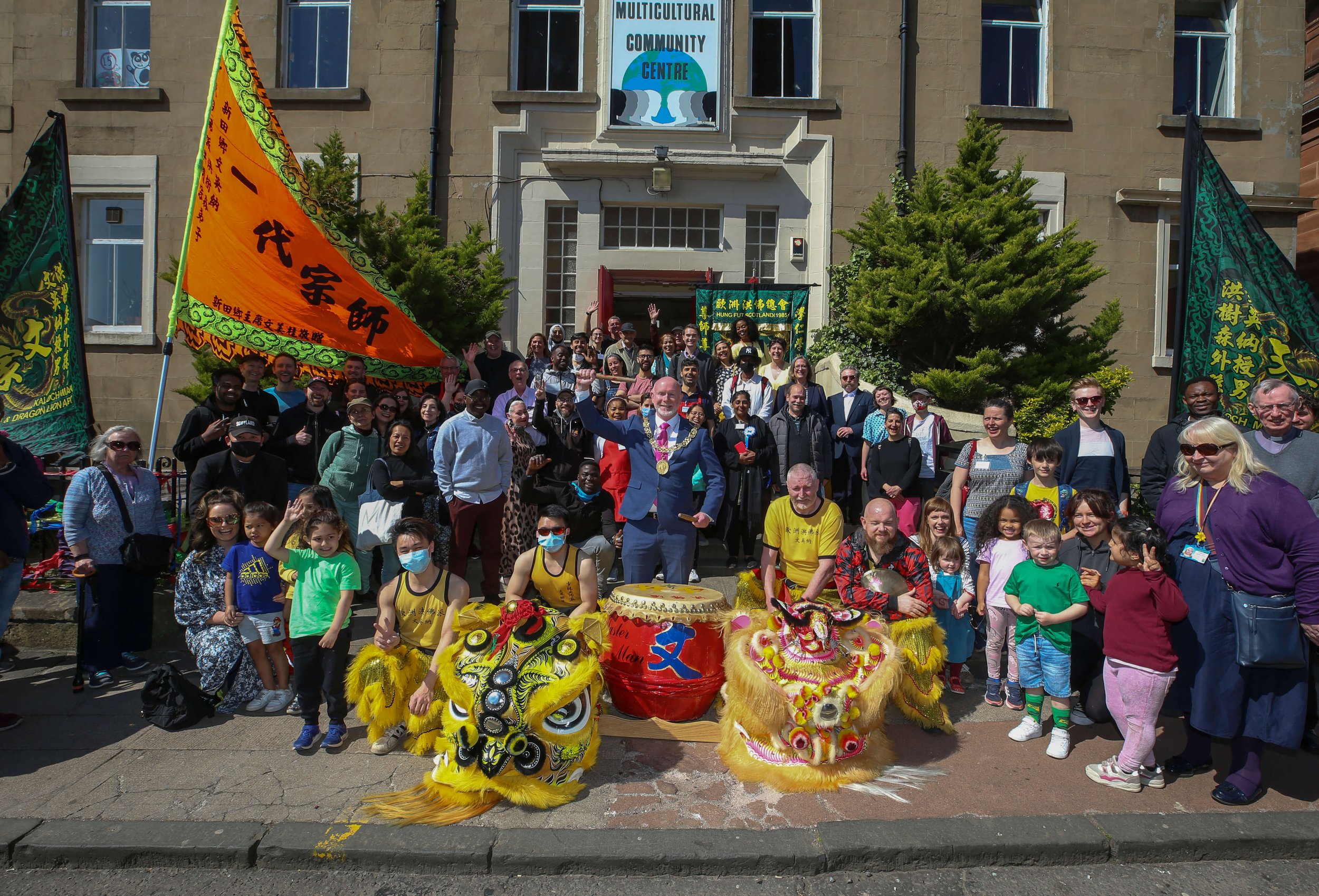
Our History
Garnethill forms part of the Glasgow Central Conservation Area. Originally known as Summerhill, Garnethill is named for Thomas Garnett, Professor of Natural Philosophy at Anderson's Institution, which opened an Observatory in the area in 1810. Read on to find out more about the history of Garnethill and 21 Rose Street.
Garnethill
[Garnethill] was once relatively prosperous - townhouses and grandly-titled terraces rather than tenements - largely by dint of its close proximity to Blythswood (on which estate it was developed) and the ambitions of builder William Harley, who laid out the streets on a contour-defying grid as far north as the village of Cowcaddens. There was a powder magazine on the north-eastern slopes, a Baths and a small reservoir, but initially the area was largely defined by handsome villas set in large gardens - none more distinctive than those lining the north side of Sauchiehall Street and collectively named Garnet Bank.
The Egyptian-styled Observatory was short-lived, as was the preponderance of affluent families who gradually moved further and further west. The construction of individual villas slowed, and instead a series of fine classically-designed tenements were built (two of which are now listed Category 'A').
1888
By 1888, the year of the first of Glasgow's International Exhibitions, the standout buildings were Buccleuch Street School, the Sick Children's Hospital, the Shamrock United Presbyterian Church, St. Aloysius College, and Scotland's first purpose-built Synagogue on Hill Street. Accordingly, Groome's Ordnance Gazetteer of Scotland of the period described the area thus:
*Garnet Hill, flanking the N side of Sauchiehall Street, near the centre, rises so steeply in some parts as to be very inconvenient for carriages and traffic, but is nevertheless covered with streets of a genteel class. It commands views of the city and south-western suburbs better and more extensively than even those from Blythswood Square."
A visually diverse area
The latter half of the C19 saw any gaps and garden ground progressively built over by good, workmanlike tenements, and then arrived Horatio Bromhead's muscular Drill Hall (1897), Charles Rennie Mackintosh's Glasgow School of Art building (1897-1909), Garnetbank Public School (1905), and C J Menart's St. Aloysius R C Church (1908-10).
Later would come the Glasgow Dental Hospital (1928-30), the Cosmo on Rose Street (now Glasgow Film Theatre) and various additions to the School of Art campus. This overlaying of post-war, inter-war, Edwardian and Victorian architecture onto the Georgian grid has resulted in a visually diverse area already made interesting by panoramic views all around, and it continues to be enriched by modern interventions such as Garnethill Park, created largely in 1990, and Elder and Cannon's work for St. Aloysius School.
Garnethill forms part of the Glasgow Central Conservation Area.
21 ROSE STREET 1828-1982
David Smith's Plan of the City of Glasgow and its Environs of 1828 appears to be one of the earliest cartographic records detailing the layout of individual villas and gardens, depicting a twin building with formal gardens on the south-west corner of the junction between Hill Street and Rose Street, and a single rectangular building on the site adjacent to the south. In all likelihood this is the building now known as No. 21 Rose Street, effectively dating it to around 1825. By 1857, the date of the 1st Ordnance Survey, the building had been joined by Hereford Place, which mostly faced Renfrew Street. Access to No. 21 seems to have been from the rear, through a pend off Rose Street along the south gable. Post Office Directories of the period consistently list no more than five occupants in any one year, although there were six apartments in total, four of which were duplexes.
At basement level there was a range of shared cellars with the kitchens and WCs belonging to two ground floor duplexes (one of which had three bedrooms, and the other four, both with parlours), while at first floor level there were two conventional apartments, both with two bedrooms. At second floor level, accessed at the head of the turnpike stair, were two flats with internal stairs leading to the attic, giving a total of five bedrooms apiece.
Aside from the handsome classical doorway on the rear elevation (now converted into a window, but probably the original exit from the pend) and a pavement light in the rear courtyard, there are few surviving traces of the building's Georgian past. There is an elegant ceiling rose at ground floor level that is almost certainly original, and the remains of a simple cast iron balustrade at first floor level (which may have been re-used, since the stair tower is not original). The attic space has a few fireplaces but has lost its dormers and any skylights.
Since it fell out of residential use, alterations to the building have been nothing short of radical.
The Archdiocese of Glasgow purchased and demolished the twin townhouses on the corner of Hill Street and Rose Street in around 1908 at which stage they commissioned a structurally ambitious church with campanile from Belgian architect Charles Jean Menart. In 1910, the Building News reported that the church had just been opened, that it was in the Italian Renaissance style of the C16 and featured a vaulted roof of reinforced concrete (innovative for the period and building type). Over time it seems that there developed the need for a church hall, with an obvious location the Georgian tenement adjacent, and in 1932 No. 21 Rose Street was taken over by the Archdiocese and significantly altered. The alterations (by architect Donald S Cameron of 183 West George Street) included the introduction of a centrally-located street entrance, the addition of a sub-Art Deco door surround, the construction of a stair tower at the rear, and the complete re-organisation of the interior spaces (using much good terrazzo in flooring and walling). The second floor was removed in its entirety to create a first floor double-height hall to seat 380, the ground floor held the Parochial Library and Saint Vincent de Paul Room, and the basement contained the toilets. Although the attic seems to have been abandoned, there may have been caretaker's accommodation, since telephone directories record two occupants from the mid 1930s until the 1960s. The most striking feature of the conversion was a series of steel trusses at hall ceiling level.
Garnethill Community Action Group
Major repair works to the building were drawn up by architect lan Bridges in 1985 for the Garnethill Community Action Group, who in 1982 (as Garnethill Multicultural Centre) agreed to take out a lease on the building, paying a peppercorn rent. By this time the attic floor had been strengthened through a series of beams supported on posts tied through front and rear walls.
Repairs Programme
The repairs programme was comprehensive, but very much in line with 1980s restoration techniques: the roof was concrete tiled, redundant chimneys capped, stonework repaired in cement and faced with "linostone", and the gable rebuilt in part due to a bulge as well as being restrained by steel channels. Notwithstanding, the building was given a new lease of life and was formally opened as a community centre on 29 March 1988 by Lord Provost Robert Gray.
Subsequently, in 1994, a wheelchair-accessible toilet block was attached to the stair tower, further restricting useable space to the rear but providing much needed facilities for the disabled who access the building by way of a ramp to the north. In 1997 the front steps were replaced, and in 2012 a fabric condition survey was prepared by Page|Park Architects in order to project maintenance and repair costs going forward.
Scottish Land Fund
In 2020 the Garnethill Multicultural Centre SCIO was successful in attracting funding from the Scottish Land Fund with which to finally purchase the building.
